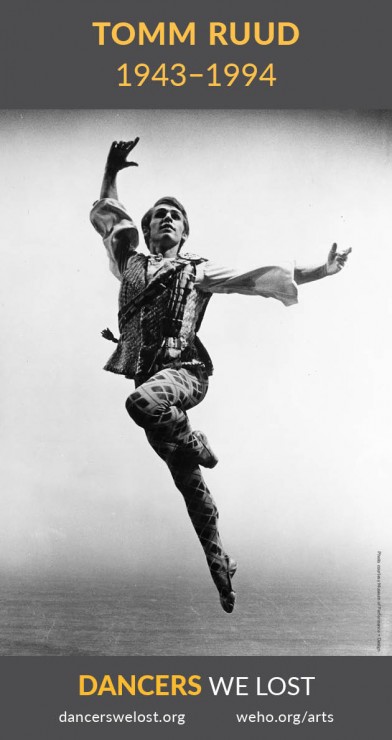
1943-1994
Born in Pasadena, California, raised in Afton, Wyoming, Tomm Ruud was inspired to become a dancer by a performance of the Utah Civic Ballet’s production of Coppelia. After attending the University of Wyoming for a year, he transferred to the University of Utah’s Ballet Department, established in 1951 by William Christensen, the first ballet department in an American university. Working closely with Christensen, Ruud earned both a bachelor’s and a master’s degrees in dance.
Christensen also co-founded Ballet West in Salt Lake City, so it was inevitable that Ruud join the company. He appeared in productions of La Bayadere, Act IV (after Petita); Prokofiev’s Cinderella; and Jubilee (Shostakovich), among many others. He also choreographed Mobile, possibly his best known ballet, inspired by the mobiles of Alexander Calder to music by Aram Khachaturian. The San Francisco Chronicle called the ballet “fascinating, striking, exquisitely conceived.”
Ruud joined San Francisco Ballet in 1975, where he became principal character dancer and a resident choreographer. He guest toured extensively around the country including a summer of 1983 performance at the Hollywood Bowl with the LA Philharmonic.
In 1981 Ruud separated from his wife to live openly as a gay man. In 1986, when he was diagnosed with HIV, she became his primary care-giver for the rest of his life. After Ruud passed away, he received the high honor of having his ashes interred in the Columbarium of Grace Cathedral in San Francisco.
